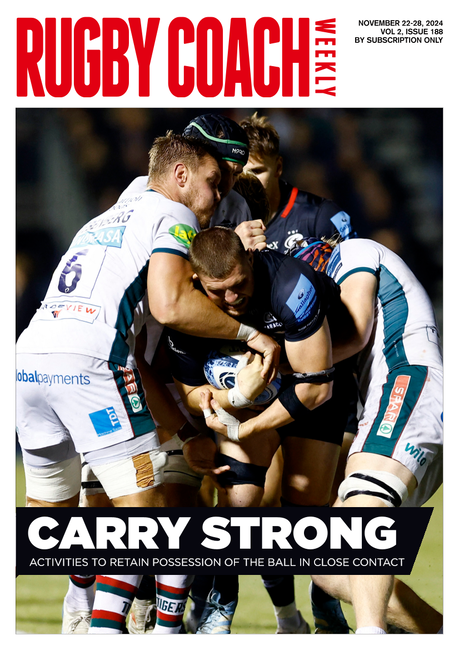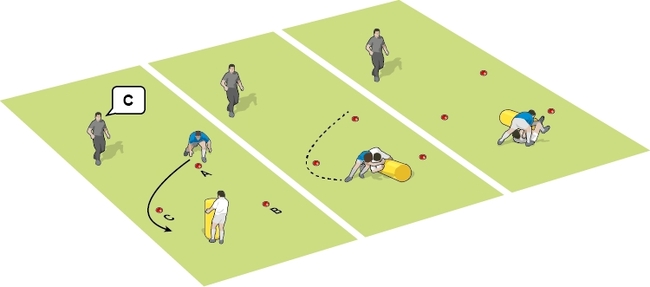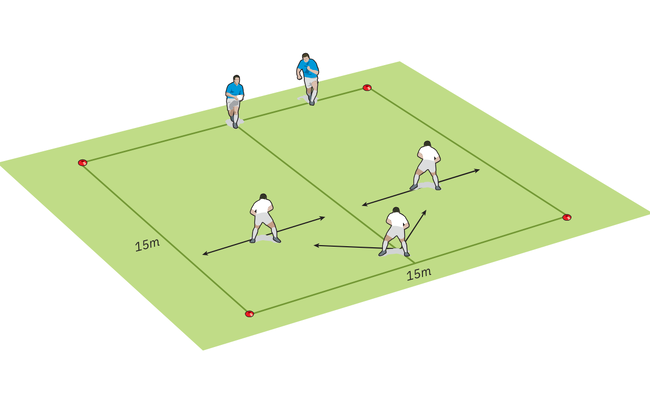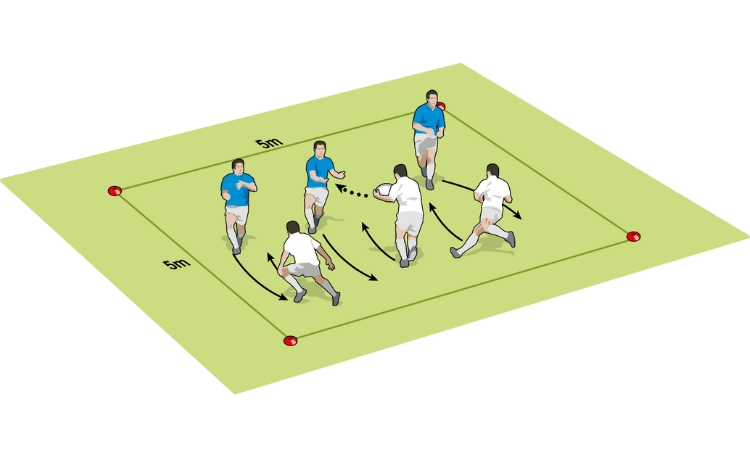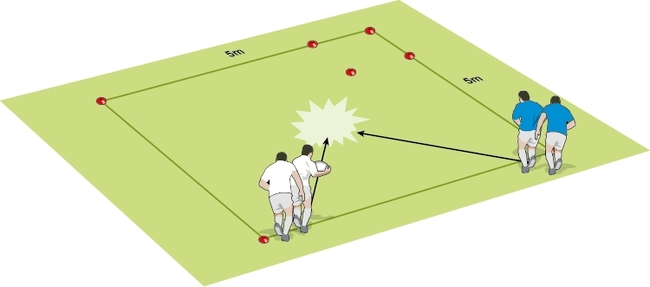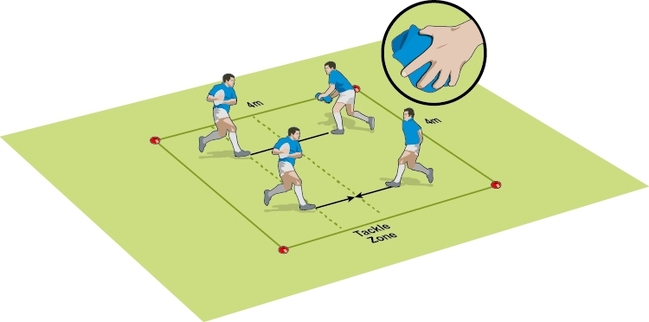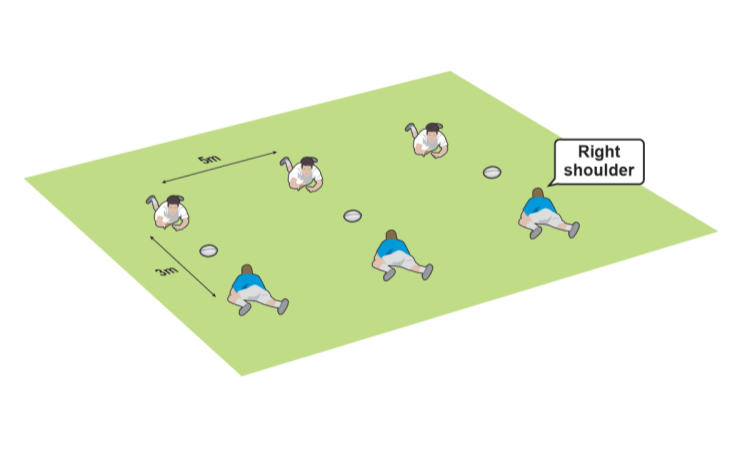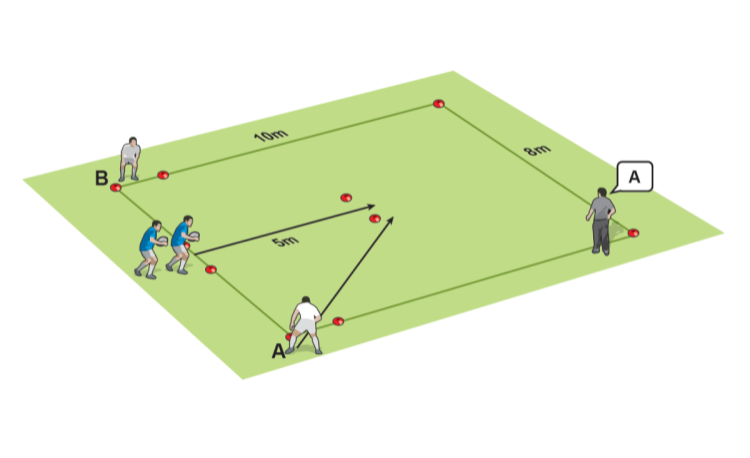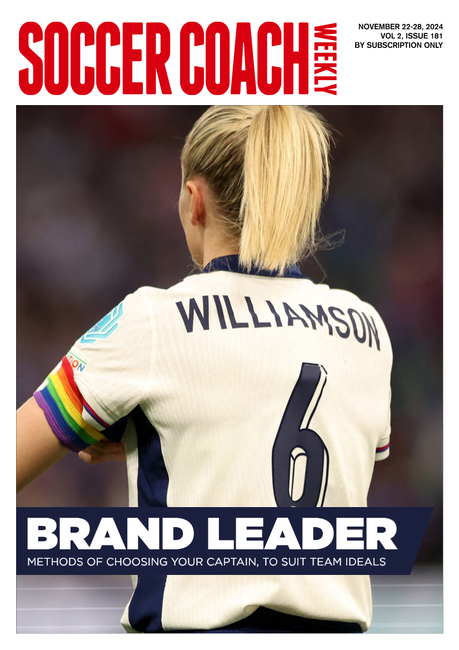Tackling technique tips to stop tries
As rugby union defences have become more rugby league-like in their organisation, so rugby coaches have to come up with new ways to try to unpick defensive lines to score tries. The two most popular ways are through kicking over or through the defence, and the offload.
Stats on these two ways to penetrate defences
- Kick over or through a flat lines of defenders: Over 70% of rugby league tries come from a kick of some sort and rugby union is starting to follow the trend.
- Offload in contact: Over 50% of tries in the 2005 Six Nations tournament and in the 2003 Rugby World Cup contained at least one offload from a tackle during their build up.
Target the ball and prevent the pass
The first priority for the tackler is to target the ball and prevent the ball carrier making a pass. This means the tackle target area is higher than traditionally. That is, at the chest rather than the waist.
This might suggest that the tackler needs to have huge upper body strength to achieve a successful tackle. This is not the case. The success of the tackle lies in its timing, which can only be achieved through repetitive rugby drills.
Prevent the pass first
In general, the mentality needs to be that it doesn't matter if we don't knock the ball carrier down as long as he doesn't get the pass away. Once the first tackler has prevented the pass being made, it is important that they are supported by a second defender who helps complete the tackle.
The presence of a second defender in the tackle also gives a better chance of winning a turnover, either by winning the ball on the ground or holding up the ball carrier and winning the ball from a static maul.
Slow down, stay upright and hit with shoulder
As the tackler approaches the ball carrier, they should slow down and take smaller steps. This allows them to react to any movements left or right by the ball carrier and still make the hit with the shoulder.
The tackler should make an effort to stay as upright as possible, with their head up, until the last possible moment. The focus should be on the target, the ball.
At the last moment, before contact, the tackler must dip at hips and drive up into target.
Shoulder hit and then one arm
The hit must be made with the shoulder not just the arms. This can be practised using rugby drills where defenders hit moving pads with their arms behind their backs.
Once the hit is made, the tackler must clamp the ball with his "hit arm", meaning that for a right shoulder hit, the right arm clamps ball. This leaves his other arm free to try and grab one of the ball carrier's legs and pick it up. This destabilises the ball carrier but keeps him upright. So the second defender can come in and help complete the tackle.
Which foot first?
The plant foot is a matter of preference for the individual. Some will plant the right foot in front of the target for a right shoulder hit. I prefer players to plant the left foot just left of the target for a right shoulder hit as this means that, as they follow through, the right leg is going directly through the target.
But I think it is best to let the individual do whichever is most comfortable for them.
Tackler's tips:
- Stay upright for as long as possible, keep the head up, and focus on target.
- Slow down and take small steps before contact.
- Plant a foot, dip at the hips and hit up into target.
- Clamp the ball with the hit arm and look for a leg with the free arm.
- Recover from the tackle as quickly as possible to try to win the ball.
Supporting defender's tips:
- Check the ball is clamped so an offload can't be made.
- Step in and make a hit on the ball carrier.
- Recover from the tackle as quickly as possible to try to win the ball.
Don’t forget... the tackle is not complete until the ball is turned over
Paul Tyler is a teacher, an SRU level 3 qualified coach with Greenock Wanderers RFC in National division 1, a rugby development officer for the SRU, and a qualified referee. Paul played representative rugby in both codes until a serious neck injury ended his playing career at the age of 22.
Newsletter Sign Up
Coaches Testimonials

Gerald Kearney, Downtown Las Vegas Soccer Club

Paul Butler, Florida, USA

Rick Shields, Springboro, USA

Tony Green, Pierrefonds Titans, Quebec, Canada
Subscribe Today
Be a more effective, more successful rugby coach
In a recent survey 89% of subscribers said Rugby Coach Weekly makes them more confident, 91% said Rugby Coach Weekly makes them a more effective coach and 93% said Rugby Coach Weekly makes them more inspired.
Get Weekly Inspiration
All the latest techniques and approaches
Rugby Coach Weekly offers proven and easy to use rugby drills, coaching sessions, practice plans, small-sided games, warm-ups, training tips and advice.
We've been at the cutting edge of rugby coaching since we launched in 2005, creating resources for the grassroots youth coach, following best practice from around the world and insights from the professional game.


